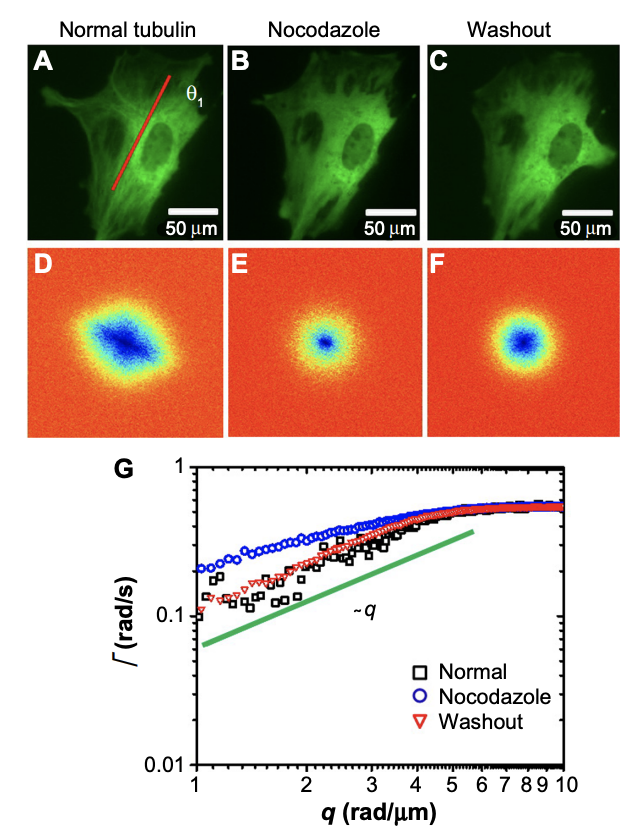DISPERSION RELATIONS OF CYTOSKELETON DYNAMICS
Ru Wang1,2 Lei Lei3 Shamira Sridharan1,3 Yingxiao Wang3 Alex J Levine4,5 Gabriel Popescu1,3,6
Cell Health and Cytoskeleton (2016) 8 Pages 1–7 2016
![]()

While it is well known that the cytoskeleton plays a fundamental role in maintaining cell shape, performing cell division, and intracellular transport, its spatiotemporal dynamics are insuf ciently understood. The dispersion relation, which is fundamental for understanding the connection between spatial and temporal scales of a dynamic system, was employed here for the rst time to study the activity of actin and microtubules. Using green uorescence protein for time-lapse imaging of the cytoskeleton, we showed that the dispersion relation can distinguish between diffusive and active transport of actin and microtubule laments. Our analysis revealed that along the laments, the transport was deterministic, as one might expect as the result of the active polymerization process, while across the laments diffusion was dominant. Furthermore, using drugs to block the polymerization–depolymerization of both actin and microtubules, we measured that the transport immediately became diffusive, as expected. However, unexpectedly, our results indicated that within a few minutes from blocking its polymerization, actin recovered an active transport component. This deterministic component vanished upon treatment with nocodazole, indicating that fragments of actin were actively transported along microtubules. Because it provides information over broad temporal and spatial scales, this approach promises to provide a new window into the active processes associated with live cells.

